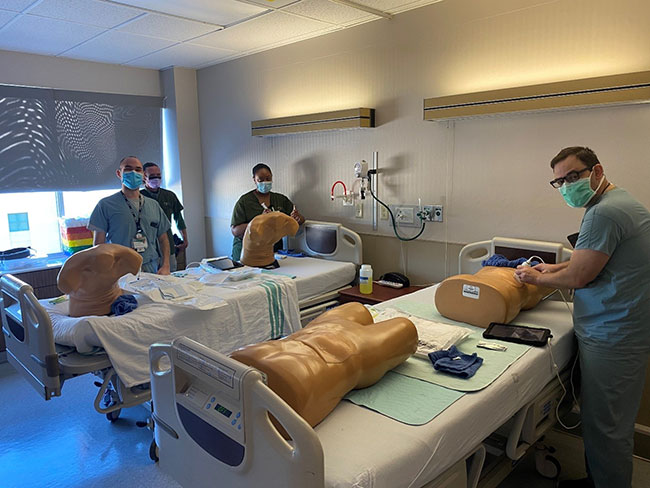By Juan D. Guerrero-Calderon, MD; Jordan Perchik, MD; Rachel Oser, MD
Expanding Radiology Access at Home: Applying a Global Outreach Model to Underserved Communities in the United States

When we think of global health, we focus on developing countries. Therefore, University of Alabama Birmingham (UAB) Radiology established a RAD-AID chapter to create global health electives for the radiology residency. However, this perspective made us overlook the healthcare needs “in our backyard”, in rural America, and even in our own cities.
Radiology services are variable in rural hospitals with a particular deficiency in interventional radiology (IR) services. UAB has a network of hospitals and training programs throughout the state, including a Family Medicine Residency Program in Selma. This program runs a clinic and provides hospitalist service to the Vaughn Regional Medical Center in Selma — a 175-bed, Level-3 trauma center and the only inpatient hospital in Dallas County.
In keeping with RAD-AID methodology, we performed a needs assessment. UAB Family Medicine residents wanted to increase their competency in performing ultrasound-guided procedures (central line placement, paracentesis, thoracentesis). They have limited IR coverage from a private practice group one hour away in Montgomery, AL, and many patients experience delays in care or must transfer to another center for care. Accordingly, we organized an instructional session for central line placement, paracentesis, thoracentesis and hand-suturing technique.
The UAB Simulation Center offered simulation models and provided chapter members with training. RAD-AID provided a portable ultrasound unit, and Philips loaned two handheld Lumify ultrasound units. In preparation, we asked the attendees to watch free online videos from the New England Journal of Medicine on the performance of the three procedures.
The training sessions had 20–25 Family Medicine attendees, including residents, fellows and medical students. Understanding they were not radiology-trained, a presentation tailored to the audience showed relevant ultrasound anatomy and key points for safe procedures. After that, they participated in hands-on, one-on-one training in four stations:
- Thoracentesis and paracentesis models
- Central venous catheter model
- Sutures in skin model
- Mutual scanning
At the site, we noted significant attendee engagement and interest. Online feedback forms were sent after the session with attendees expressing an increased level of comfort after the workshop. All the respondents expressed interest in similar events in the future.
Discussion
The SARS-CoV-2 (COVID-19) pandemic highlighted health inequities in the United States and around the world. Racial and ethnic minority patients are more likely to present with increased disease severity from COVID-19 on admission chest radiograph, partially associated with a significantly delayed presentation after the onset of symptoms.[1] Furthermore, the social reckoning on institutionalized racism has emphasized that despite the progressiveness of our society, the Black community remains institutionally marginalized.
The first step was to understand the healthcare needs of the population. We subsequently found local partners from within our own institutions who were aware of the population needs. From there, we reached out to vendors for equipment loans. With persistence and an advocate within the company on our side, we were able to obtain the required equipment.
Also, speaking a language that your attendees understand is key to achieve attention and integration. Attendee engagement will make your endeavor fruitful and is very motivational. For us, the primary care physician attendees continued to deliver easily accessible, quality healthcare to the local underserved, predominantly Black community.
As radiologists, we play an important role in improving the health of the populations we serve through research, education and clinical practice. Not only do we promote health with screening and early diagnosis, but we also provide insight to unrecognized and emerging disparities among racial/ethnic minority populations.[1]
We do not need to travel abroad to bridge healthcare gaps. Systems thinking can be used to identify healthcare needs in communities nearby. Due to the success of our 2019 and 2021 events, the training session in Selma will continue as an annual event. We hope that more academic and private radiology practices are inspired to identify disparities and initiate their own projects to address local healthcare inequities.
References
- Joseph N.P., Reid N.J., Som A., Li, Matthew D., Hyle, E.P., Dugdale, C.M., Lang M., Betancourt Joseph R., Deng F., Mendoza D.P., Little B.P., Narayan A.K., Flores E.J. “Racial and Ethnic Disparities in Disease Severity on Admission Chest Radiographs among Patients Admitted with Confirmed Coronavirus Disease 2019: A Retrospective Cohort Study,” Radiology, July 16, 2020.